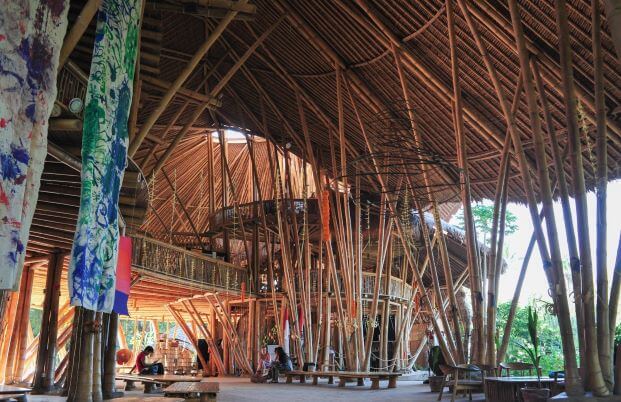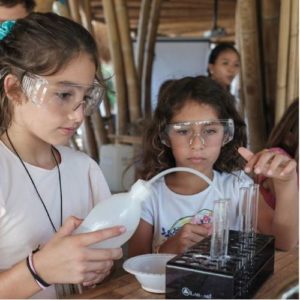

The Green School - a holistic approach to educate. Source: The Green School, Bali
The Green School in Bali has become a star attraction for the various nationalities in Bali. With over 400 students in Pre-k to 12 grade and that too from 35 and more nationalities, the school has carved a niche for itself in the beautiful lush green locales of the island that is an ecological hotspot. The school has become a sort of bamboo beacon, a pilgrimage site for progressive educators, a stop for global luminaries from former UN secretary-general Ban Ki-moon to primatologist Jane Goodall.


Green School’s mission of “a community of learners making our world sustainable” sets the core philosophy of why and how the School educates. The “Green School Way” is to prepare for the real world by being involved in it now; to have impact now; to take responsibility now; and to model and practice the skills and mindsets that we will need later on, now.
They do this by:
Through a curriculum which:
Green School is a project, pioneering sustainability within education. It is the brain child of John Hardy and his wife Cynthia, who are trying to push boundaries in schooling at a time when the world must review whether more of the same is acceptable.
John Hardy is famous for having unconventional ideas and turning them into a reality. After selling his share of the John Hardy jewelery company in 2007, he and his wife, Cynthia, conceived and set out to create the world’s first Green School in Bali, Indonesia. Within eighteen months, they built a school for the future by pioneering a new form of education. The school is built entirely from local materials with an emphasis on bamboo.
While some schools might employ the word “green” in the context of their LEED-certified building or cafeteria recycling effort, this place takes green to another level. Instead of SUVs, kids show up in used-cooking-oil-fueled Bio Buses (another project led by students, one of whom recently represented Indonesia at the 2017 Miss World pageant). School lunch is cooked with sawdust fuel from a local bamboo farm, and served on ingka, or straw baskets with a compostable banana-leaf lining. There is a menagerie of rabbits and chickens. (The fourth-graders took out a loan to buy the chickens, and now raise them and sell their eggs, in a typically immersive Green School introduction to economics.) There’s a food-generating aquaponics facility, and an aviary for the endangered Bali starling. They learn to make tools and farm and also produce fruits and other eatable plants and vegetables.
The school is preparing students to be critical and creative thinkers who are confident to champion the sustainability of the world and its environment. The Green School’s popularity is premised on the next generation of leaders requiring not just maths or literature or history – though the school teaches those, too – but a wider set of tools, ranging from adaptability to teamwork to the sort of problem-solving that flourishes under conditions of constraint, which will prove useful in a world whose resources will only continue to diminish.
The Green School’s popularity among all the people from all walks of life underlines that such a ‘different’ idea of schooling is generating much needed buzz and actual response.
1. The mandate for blending Compressed Biogas (CBG) with natural gas has come into effect…
Andhra Pradesh is striving towards greening its energy sector with quite some speed. In a…
With an objective to bolster India’s green energy goals, a Tripartite Agreement has been signed…
The Union MNRE Minister Pralhad Joshi launched the Green Hydrogen Certification Scheme of India (GHCI)…
India’s energy conglomerate Bharat Petroleum Corporation Limited (BPCL) has commissioned a 5MW green hydrogen plant…
In a historical development, the European Space Agency (ESA) has successfully launched its pioneering ‘Biomass’…